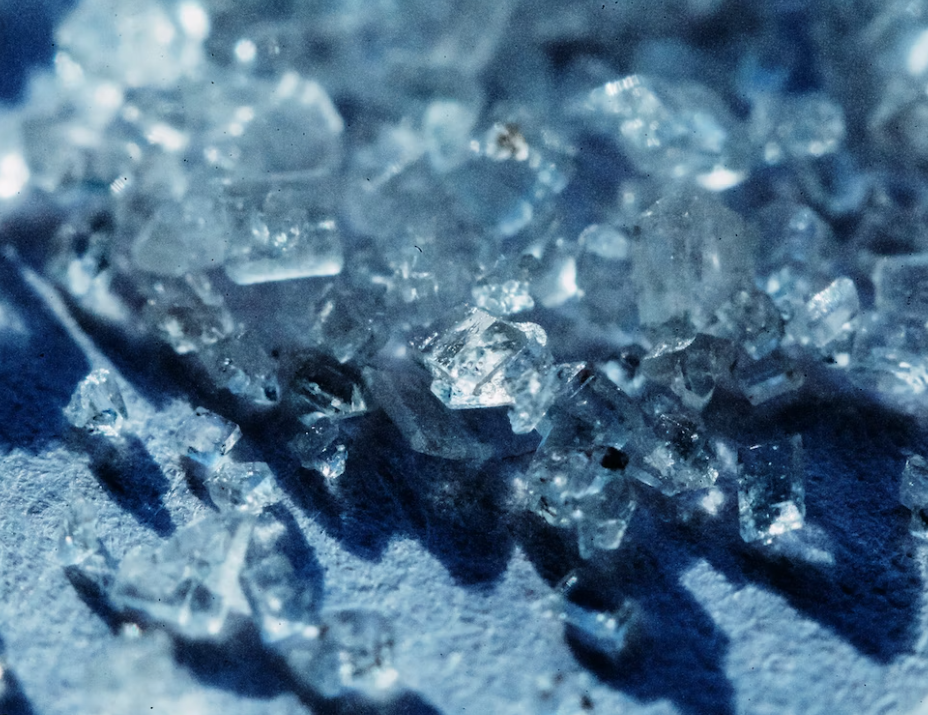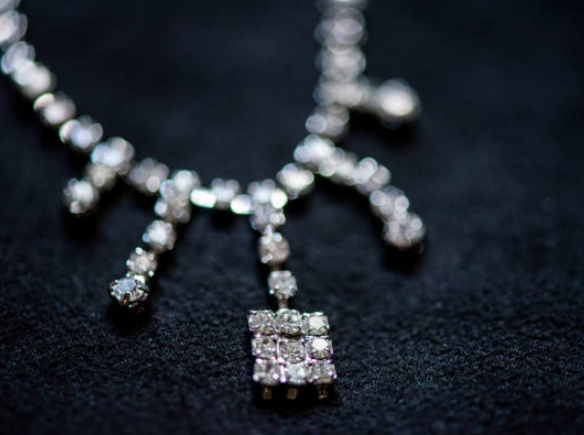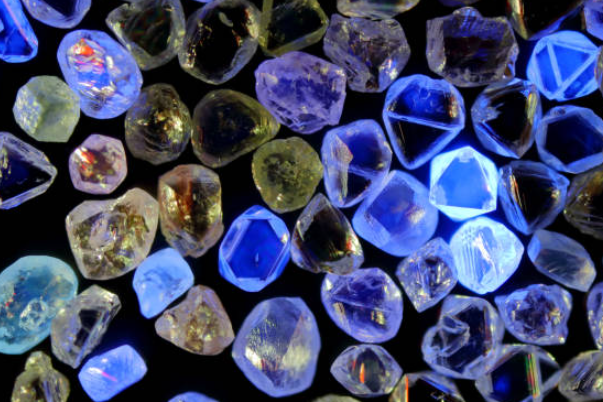You look at your new diamond from the outside, and probably have admired it countless times, and you realize that it looks absolutely blue today. You’ve never seen this color before. Do you want to know why it is blue in the sun but looks colorless indoors?
Your IGI certificate proves its authenticity and indicates that the work does not fluoresce. Before curiosity is replaced by doubt, allow us to explore the possible causes of this color in this article, to put your mind at ease, or to give you a reason to return to the jeweler!
What Color Should a Diamond Look in Sunlight?
Diamonds with a good cut sometimes appear blue, purple, gray or dark in direct sunlight. The cut and facet determine how much light a diamond reflects and how much light it leaks. A well-cut gemstone reflects a lot of light, making it appear darker to the human eye.

This appearance in the sun should not be mistaken for the GIA color grading system. This is determined by the presence of chemical impurities and structural defects in the stone.
According to GIA’s color grading standards, the fewer colors a diamond has, the better. The system is graded from colorless to light yellow or brown. The appearance is also not fluorescent, as this has different effects. Fluorescence is the result of trace amounts of boron and nitrogen in diamonds.
When a diamond is exposed to ultraviolet light, fluorescence makes the diamond glow. The color of direct sunlight is located inside the work. Although the sun has ultraviolet rays, they rarely fluoresce on stones.
Why Does My Diamond Look Blue in the Sun?
Most diamonds reflect dark blue or gray in direct sunlight. Your diamond looks blue in direct sunlight because it reflects the sky.
When the sun is shining and the sky is blue, the inside of the carefully cut stone reflects the blue of the sky.
You’ll notice that this doesn’t happen if the sky is covered by clouds or if you move to the shade. This is one of the reasons why photos of products sold are usually taken in the shade, away from direct sunlight. Continuous diffuse illumination is best.
Fluorescence also makes your diamond glow blue in sunlight. This is not the color that comes from the reflective properties of the gemstone, but rather the diamond’s tendency to produce a glow under ultraviolet light.
About 30% of diamonds emit some degree of fluorescence, most of which are blue. Among them, only diamonds with very strong fluorescence will glow in the sun.
In addition to white diamonds, there are blue diamonds, which are diamonds that have the same properties as minerals but with an extra blue color in the stone.
Their color is attributed to trace amounts of boron contaminating the lattice structure. If your diamond is blue, it will appear blue in most light.
How Does Sunlight Affect Diamond Fluorescence?
It is important to note that ultraviolet rays in sunlight do not affect most diamonds with fluorescence. Only gemstones with very strong fluorescence (about 0.6% of all diamonds) glow in sunlight.
The luminous color is blue, and there are few other colors such as yellow, orange, white, or red.
Fluorescence is related to the presence of nitrogen atoms. It is seen as an identifying factor rather than a performance characteristic. In some cases, fluorescence can reduce the value of a gemstone.
What Should a Diamond Look like in the Sun?
Diamonds can look a variety of people in different light and can be complex. The appearance depends on the light source, diamond color, and diamond cut. A diamond’s cut is the most important factor that affects how it behaves in light.
The best cut, clear, colorless diamonds look darkest in the sun. This surprised most of us, and we originally thought it would be a dazzling white.
There’s a scientific explanation for the dark appearance: it comes down to our physiology, so keep an eye out. First, sunlight consists of very small, very bright point light sources.

An ideal cut diamond reflects some intense bright flares in direct sunlight. When you look at a diamond in the sun, it’s like looking straight into the sun.
Looking directly at the sun is not good for the eyes, so the pupil protects the eyes by dilating. As a result, diamonds appear darker due to the limited amount of light that the pupil allows into the eye.
Crushed ice diamonds exhibit a lighter color in sunlight than an ideal cut gemstone. This is because crushed ice diamonds have more facets.
In sunlight, smaller facets on the stone divide a few flashes into multiple smaller flashes, making it less intense to the eye and therefore less dark in comparison.
If you want to appreciate the beauty of diamonds in the sun, the best way is under the shaded trees (if you can). The leaves filter the sun’s precise rays, providing enough shadow to your pupils and not restricting the light entering your eyes.
This way, you will be able to see your diamond in all its glory, see it sparkle, and enjoy the display of colors around you.
One way to tell a diamond from a fake is to observe how shimmering it is. When a real diamond is exposed to light, its interior shimmers with a white or gray glow (its brilliance).
It will reflect the iridescent color (its flame) onto other surfaces. When the stone is placed in the light, the interior of the fake takes on an iridescent color.
Related Q&A
Why does my diamond look dark in the sun?
Because of our pupils’ response to diamonds’ bright reflections, we think diamonds appear black in sunlight. Diamonds with the best cuts look darkest in the sun.
In fact, diamonds reflect a lot of light in the sun, and the dark color is entirely due to our physiology. When our eyes are exposed to bright light, the pupils dilate.
This weakens our perception of the brightness of the foreground and background in front of us, making bright objects appear darker, and therefore diamonds look darker in sunlight.
Why does my diamond look gray in the sun?
Gray is one of the dark colors that diamonds take on in the sun. This indicates that your gemstone is a well-cut diamond.

The gray color is due to the conditioning of the light by your eyes to protect yourself from the damaging effects of the extremely bright light reflected by the diamond.
The cutting and polishing of a diamond greatly affects the light properties of a diamond. When light enters the diamond, it is either reflected or leaks from the gemstone.
The reflected light creates brilliance that makes it appear bright, while the light that leaks out is invisible. The gray level, from light gray to dark gray, is determined by the intensity of the light reflected by the diamond. The better the cut, the darker the color of the diamond.
Conclusion
Real diamonds appear blue in sunlight. It may also look gray or dark. However, this is not enough to prove that the stone is a diamond. When it comes to how real diamonds react to light, real diamonds shimmer white or gray inside under light and reflect iridescent colors on other surfaces. The interior of a fake will take on a rainbow color. However, this is only one of the tests. A qualified jeweler can help you determine the authenticity of any gemstone.
